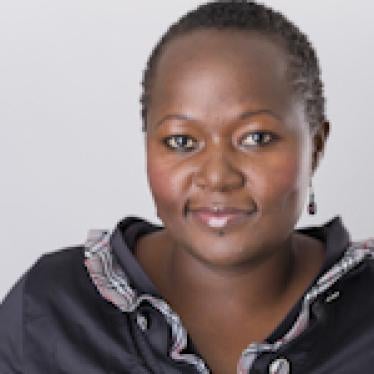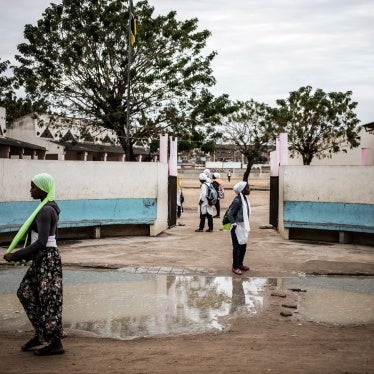Obstetric fistula is a ‘disease of poverty’ that still affects thousands of women all over Africa. But if the causes are properly addressed, it is preventable.
I grew up in a small rural village in eastern Kenya. Like most children in my village, I loved swimming in the river and seized every opportunity to go there. But there was one girl in the village, Catherine*, who never swam. She kept herself to herself. I thought perhaps she did not enjoy our company because she was a little older and had been married.
But then I heard the gossip: Catherine smelled bad because she leaked urine all the time and was afraid to go near people. I did not understand Catherine’s condition then, but now I know that she had an obstetric fistula, an entirely preventable and treatable childbirth injury that leaves women and girls with urinary and fecal incontinence or both. Fistula causes a variety of suffering for its victims.
A preventable and treatable condition
When I interviewed over 50 Kenyan women and girls with fistula about three years ago, most of them broke down crying during the interviews. They told me about the shame and pain that they had endured - the trauma of a long, painful obstructed labour that often ended with a stillbirth, and the shock of not being able to control their bladders or bowels.
One woman summed up the despair of living with fistula:
“It is difficult to walk. You feel like your thighs are on fire. You can’t travel. It is so uncomfortable when you sleep. You can’t work because you are in pain; you are always wet and washing clothes. Your work is just washing pieces of rugs. You cannot eat comfortably because you fear the urine will be too much. It hurt so much I thought I should die.”
Most of the women I interviewed were young and poor, had little formal education, and lived in rural areas. They knew very little about sexuality and contraception. They married early, some as young as 14, and became pregnant when they were still children themselves. Decisions about where they would deliver their babies were often made by their husbands, mothers-in-law, or other relatives. Many had no jobs, and struggled to pay for transportation to a facility where they could get adequate care when they gave birth, usually a dispensary or health centre. The facility usually had no capacity to handle obstructed labour, a common complication in young women, and no ambulance to move them to a hospital where they could be helped.
They described living in pain and isolation, some for years, even decades, before learning that surgery is available to repair fistula. But for many of them this news did not lead to hospitals and surgeons as they, along with many other fistula sufferers, lacked the resources and the autonomy to seek surgery. Furthermore, public health facilities in Kenya, as in other African countries, rarely offer routine fistula surgery, and there are few trained fistula surgeons.
Developing the infrastructure for treatment
However, there are programmes that offer the surgery, and it is a chance for a new life for many women with this condition. Donor-funded fistula repair “camps” mobilise women in the area, screen for obstetric fistula, and provide surgery for those affected.
Fistula hospitals and fistula centres or wards exist in several countries, including Kenya, Ethiopia and Nigeria, and are dedicated specifically to fistula repair. They usually also act as training centres for surgeons and other health workers in fistula management.
One such centre in Niger, the Danja Fistula Center, was built with Western donations. The centre was established by Dr Lewis Wall, founder of the Worldwide Fistula Fund, and a surgeon and professor of obstetrics and gynaecology who has written extensively on the condition. Dr. Wall has been criticised for supporting a treatment-focused approach to fistula that would involve building stand-alone fistula centers in Africa to be run by Western surgeons.
Women and girls suffering from fistula absolutely need access to facilities with the expertise to treat them. But the real problem is that these facilities do not address the causes of fistula, and addressing the causes is necessary to eliminate it.
Towards a prevention strategy
The causes are both a medical problem and a human rights concern. Ending fistula requires a comprehensive approach that includes protecting girls' and women's rights, including access to quality reproductive and maternal healthcare, as well as developing strong healthcare systems.
Prevention is key. To end fistula, women need access to emergency obstetric care and skilled birth attendance. But providing comprehensive sex education and family planning services to girls and women, enabling them to make informed choices about their sexual and reproductive lives, is an indispensable prevention strategy.
It is equally important to combat underlying social and economic inequities that contribute to the problem - including women’s low status, lack of education for girls, early/forced marriage and childbearing, malnutrition, poverty, and harmful traditional practices such as female genital mutilation.
The World Health Organisation recommends implementing initiatives that integrate fistula repair into existing national programmes on safe motherhood and those aimed at improving maternal and neonatal health generally. This will ensure that efforts are effective, sustainable, reach all women, and contribute to stronger health systems overall.
Contributions of Western taxpayers and donors have gone a long way in helping women and girls with fistula in Africa. However, supporting comprehensive efforts that address both prevention and treatment are crucial to end the devastation that results when girls or women suffer from the condition.
*Names have been changed.








